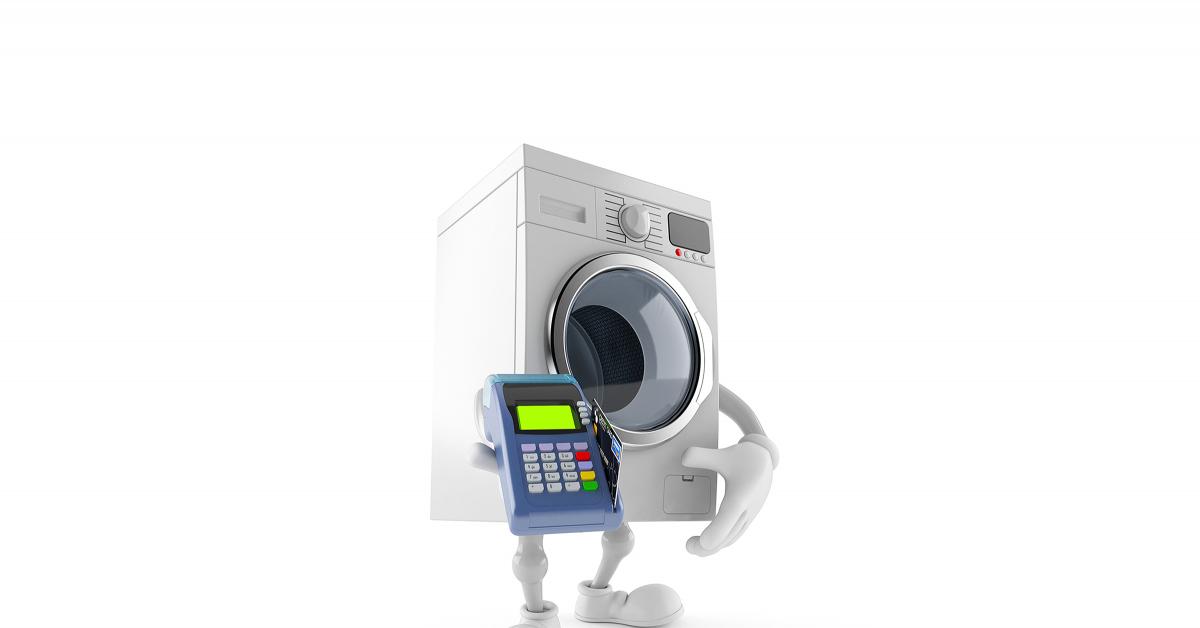CHICAGO — Coin-operated laundry equipment has been the standard for years but the use of digital, cashless payment continues to surge as consumers become more entrenched in its conveniences. But what’s involved in converting a coin-based operation to one whose payment acceptance is based on credit/debit/store value card or a mobile device?
Part 1 of this article touched on the store owner’s role up to and following installation of equipment designed to accept the alternative payment form when converting to card or mobile payment. Let’s continue:
HOW MANY?
A store owner can choose to convert only part of their store, say, a few machines, or go “all in” and convert the entire store at once.
“For a credit card hybrid system, it’s not uncommon for store owners to choose to install devices on only some of the machines, typically the larger machines with higher vend prices,” says Steve Marcionetti, president of Card Concepts Inc. (CCI), which makes products for card and mobile payment. “This allows the store owner to start offering the convenience to their customers but also limit their initial investment. Typically, we find that these store owners will circle back after some time and start converting the rest of the machines in the store as their budget allows.”
Store owners can convert part of their store, but the majority of Setomatic customers prefer to convert the entire store at once, says John Kelly, director of sales for Setomatic Systems’ SpyderWash, which provides card and mobile payment among its options.
“This saves them on labor costs and downtime,” he explains. “The thing we always worry about when not converting the entire store is that a customer will come in and all the credit card-equipped washers are being used and now they are forced to use cash. Laundries that convert all their machines typically see a much better ROI.”
“To my knowledge, all of our customers convert their stores entirely and never look back,” says Oleg Stepanov, business development manager for Mitech Integrated Systems, developer of the Laundroworks card system. “If you leave a few machines, you still haven’t solved the coin problem fully. Moreover, you have partitioned your store such that neither group has access to the full store.”
“Some people do (convert just part of their store), but they almost always come back to order devices for the rest of their store,” says Steve White, SMB sales manager for PayRange. “The reason is a partially converted store tends to cause a poor user experience. For instance, if a customer has used the PayRange app on a large washer, but is then required to use quarters for the dryers, this switching between payment methods at a minimum creates a hassle.”
If only part of the store is to be upgraded, careful thought should given to the number of machines, machine capacity, and matching dryer availability, says Wayne Lewis, CEO of ESD Inc., which makes products for card and mobile payment.
“The risks involved when only part of the store is upgraded include not converting enough machines, not diversifying the washer capacity sufficiently, and not providing the option on the dryers,” he says.
SIGNAGE IS VITAL PIECE OF PUZZLE
Embracing cashless payment can mean hardware and software changes of varying degrees but a less technical piece of the puzzle has proven just as vital to a successful changeover.
“The significance of user instructional signage cannot be overstated. It is critical to the success and adoption of the new system for all users to know and understand the intricacies of the system’s operation,” Lewis says. “This also includes signage advising the existing customers of the enhancements planned for the store in advance of the system installation. The fewer surprises to the customer database can relate to a smoother acceptance and adoption of the new system.”
“Signage is important, particularly in an unattended location,” says Marcionetti. “Even in an attended location, not every customer wants to be walked through the new product. Some are more comfortable learning on their own, and good signage is key.”
“I would even put (up) a TV with playback of a short clip showing basic usage,” adds Stepanov.
“Having (signage) posted can help bring more customers into the facility and improve the adoption of the new payment methods with simple instructions,” says Stacey Cooper, general manager – retail, KioSoft.
“Making a change, such as adding a payment system, is only worthwhile if your customers know about it,” Kelly says. “I’ve seen many great operators post several signs saying, ‘Now Accepting Credit Cards!’ or ‘Now Accepting Apple/Google/Samsung Pay!’ This is a great way to attract new customers who may be going to a competitor. If the customer can pay the way they are most comfortable with, they will very likely keep coming back.”
“Yes, particularly with PayRange, signage is key to user adoption,” says White. “This is because the payment hardware is installed inside the machine, and not visible to the user.”
Check back Wednesday for the conclusion!
Have a question or comment? E-mail our editor Bruce Beggs at [email protected].



